Botanical name : Daucus carota
Common name : Carrot
Challenging for seed saving
Lifecycle: Biennial
Pollination: Insect pollinated
Mating system: Perfect flowers in umbels
Suggested spacing: Mature carrots should be transplanted to 60cm spacings
Seed specific requirements: Vernalisation required
Isolation distance: 250 m
Population size: 20 or more plants
Seed maturity: Seeds in flower heads turn brown. The outer florets of the umbel cup and turn inwards.
Processing method: dry process
Expected seed viability: 4 years
Growing for seed
Carrots need to go through vernalisation in order to initiate flowering. Temperatures under 10 C are needed for this. In Australia there are few locations that get too cold for carrots to remain in the ground over winter so it is usually easiest to keep carrots in the garden for seed.
Carrots are somewhat prone to inbreeding depression and should be allowed to flower together in larger populations if possible.
When growing carrots for seed it is important to ensure they aren’t cross-pollinated by wild carrots or ornamental varieties such as Queen Anne’s Lace, including the chocolate and purple forms enjoyed by many flower growers. Isolation distances of at least 250 metres are required.
Selection
Carrots being grown out for seed can be harvested in mid-winter, their tops cut back and then replanted at the larger spacing required for seed production. This is the ideal time to select against cracking, forking, and splitting. Colour and form should also be considered when selecting those carrots to grow on to seed. The internal colour can be checked by cutting a few centimetres from the bottom of the carrot. This cut of tip can also be checked for flavour.
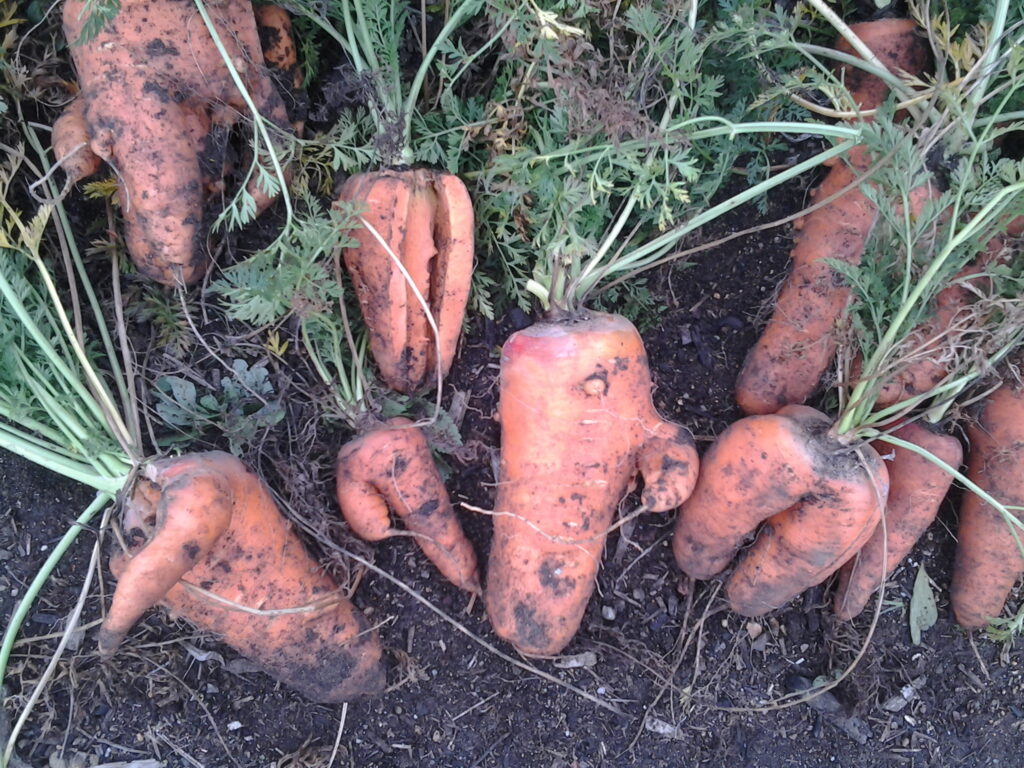
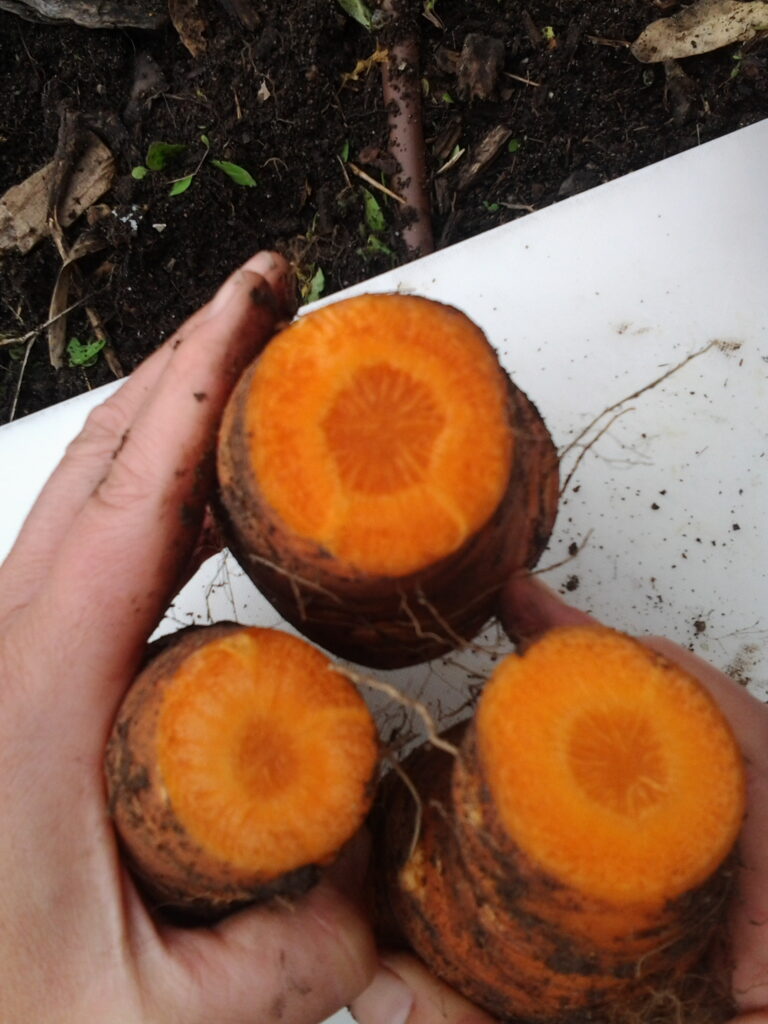
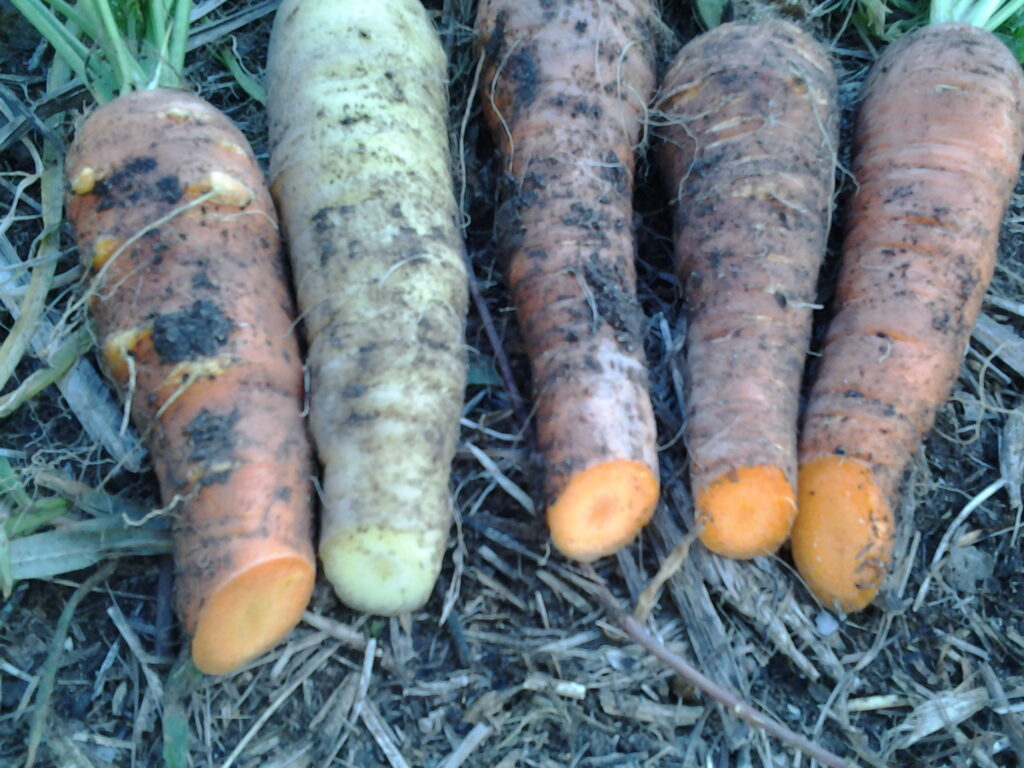
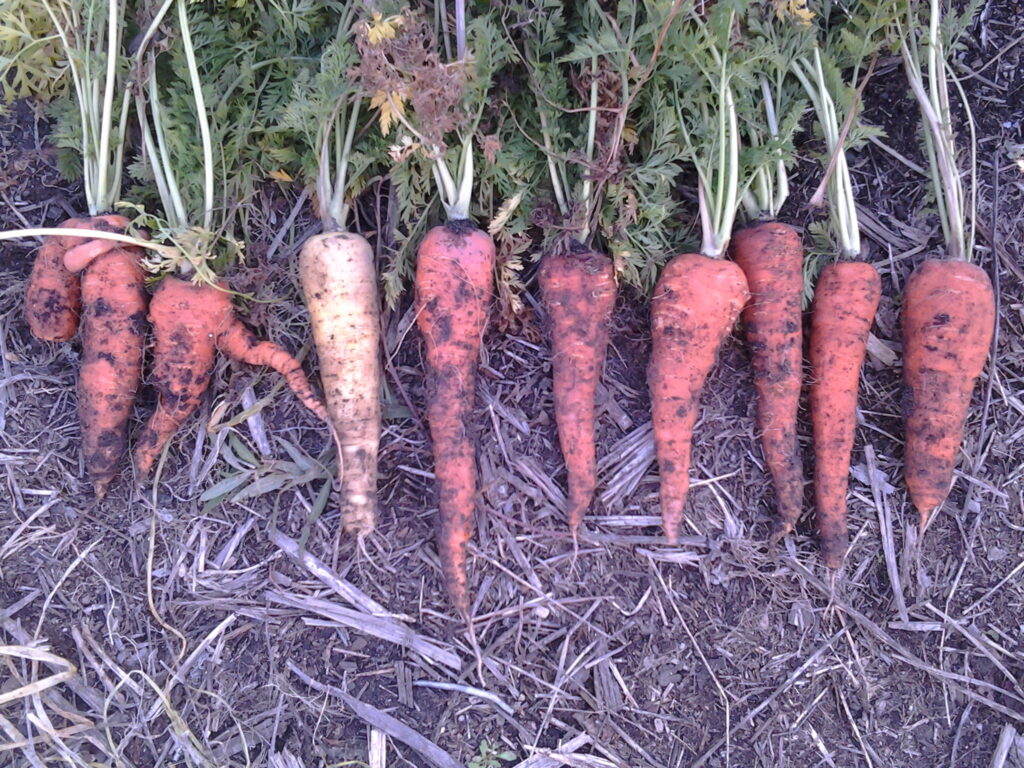
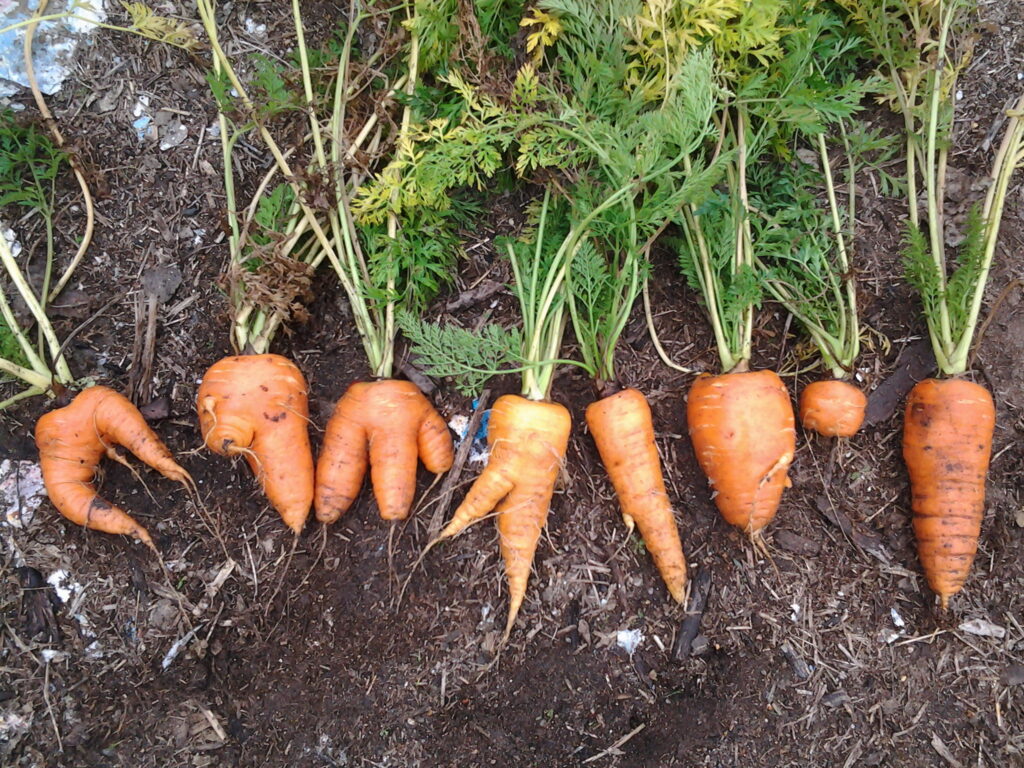
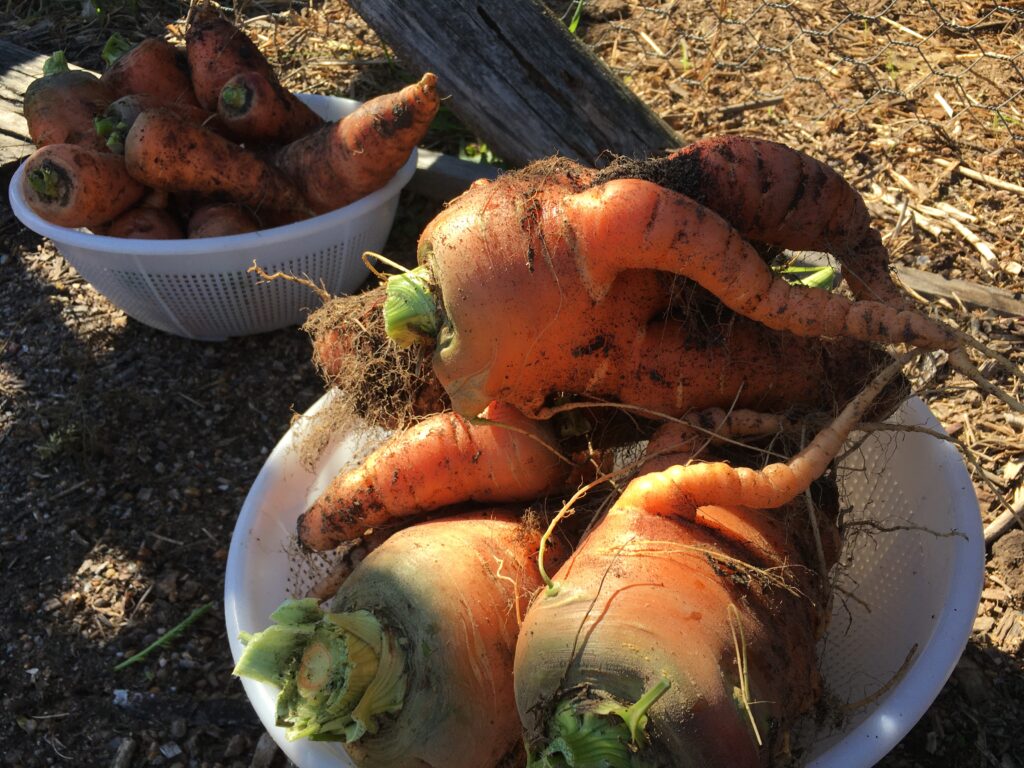
Harvest
Carrot flowers reach seed maturity in a continuous fashion over many weeks. The central flowerhead will mature first, followed by the smaller side shoots. The first matured seed will be the biggest and strongest seed so growers may choose to stop harvesting seed after the initial lot of side shoots are collected. As carrots need to be grown in sufficient populations for genetic stability enough seed may be achieved by harvesting modest quantities from many plants.
Seed heads are mature enough to be harvested for seed when the seeds have turned brown. The outer florets of the flowerheads bending inwards is a good indication that the head is ready to harvest.
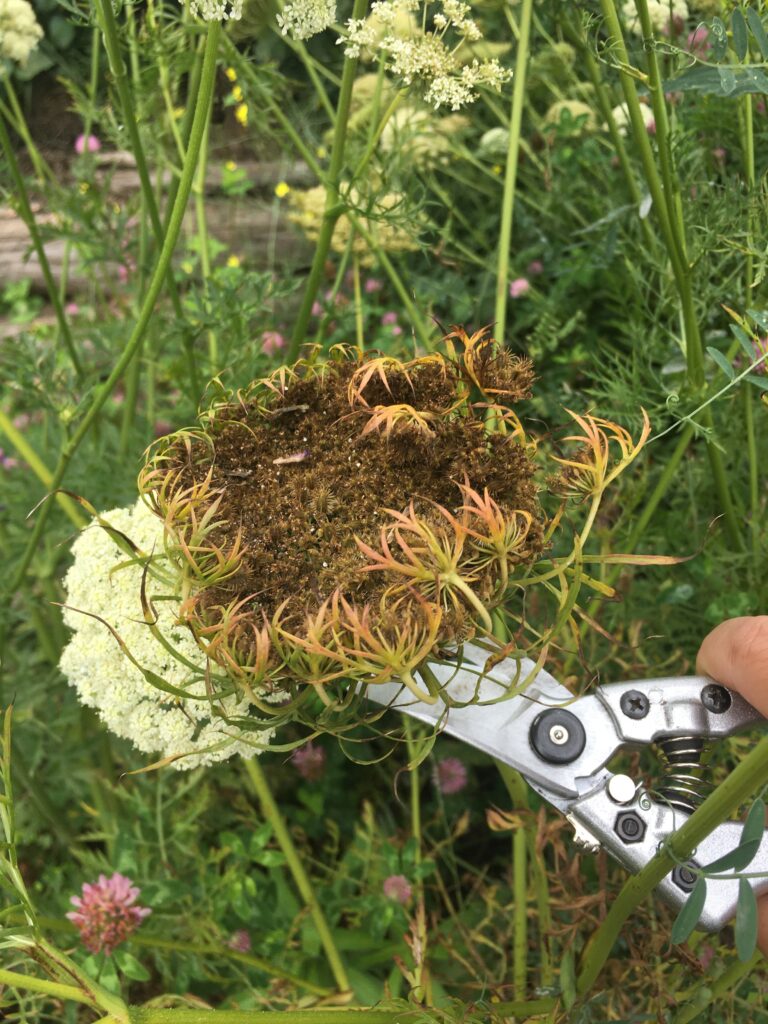
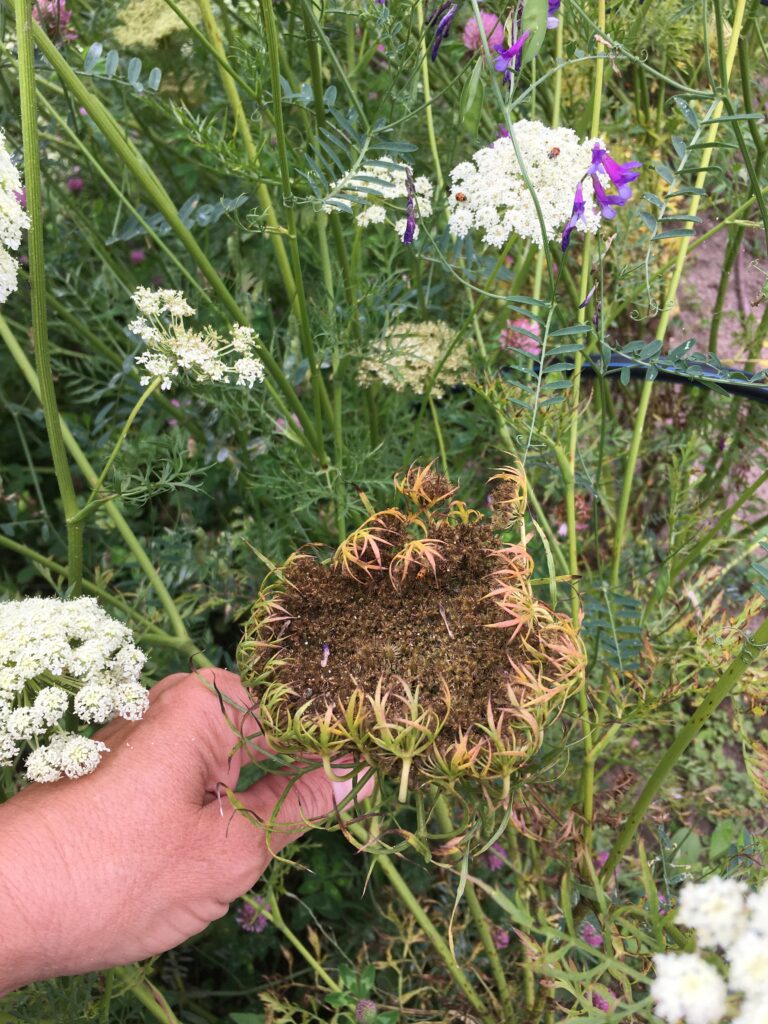
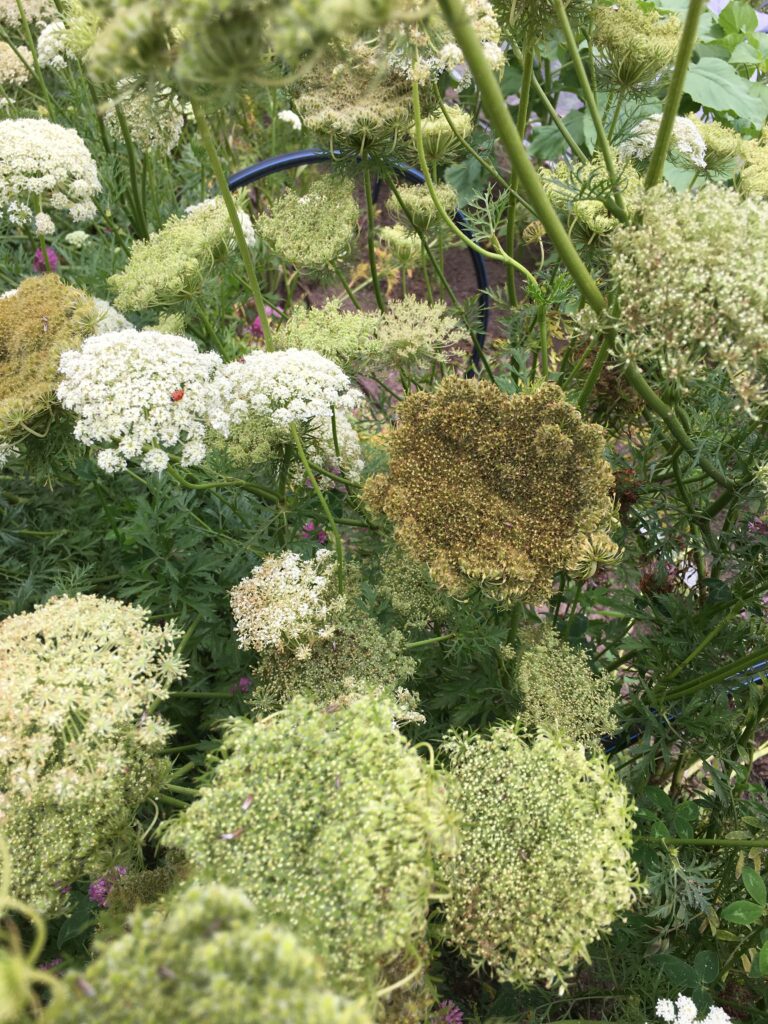
Processing
Carrot seed can be dislodged from the flowerheads by either rubbing them between gloved hands or rubbing the head over the mesh of a sieve. When they are rubbed on a sieve paying attention to just dislodging the seeds without dislodging portions of stalk can make the rest of the cleaning process easier.
Seed can be sieved and winnowed to remove unwanted frass.
Contributors
Liz Worth, Nellie Pryle
